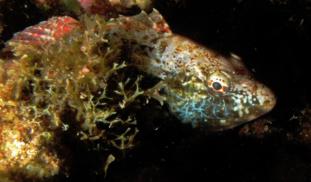Please wait...
About This Project
The incredible diversity of colors displayed by coral reef fishes is one the most striking yet poorly understood aspects of their biology. We will measure both fish color and environmental light attenuation to develop an understanding of how color evolves in reef fishes. This conceptual framework will allow us to forecast how contemporary changes to reef habitats, especially those in water clarity, will impact coral reef ecosystems and conservation initiatives in the near future.

Browse Other Projects on Experiment
Related Projects
How do polar bears stay healthy on the world's worst diet?
Polar bears survive almost entirely on seal fat. Yet unlike humans who eat high-fat diets, polar bears never...
Uncovering hidden insect diversity associated with a likely undescribed gall-forming midge
Does a likely undescribed species of gall-forming midge (pers. comm. Ray Gagné) on Eriodictyon plants (Yerba...
Macrofungi of the California archipelago
The eight islands of the California Archipelago are a well-studied biodiversity hotspot — but we know almost...


